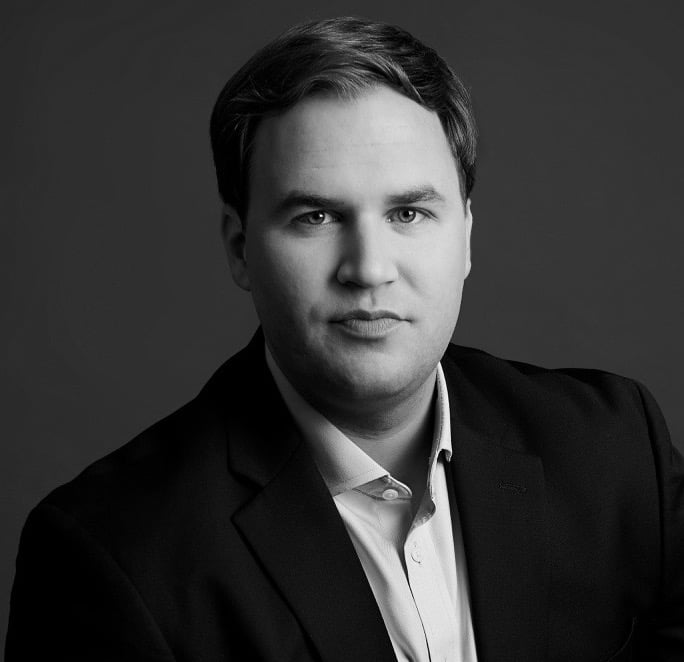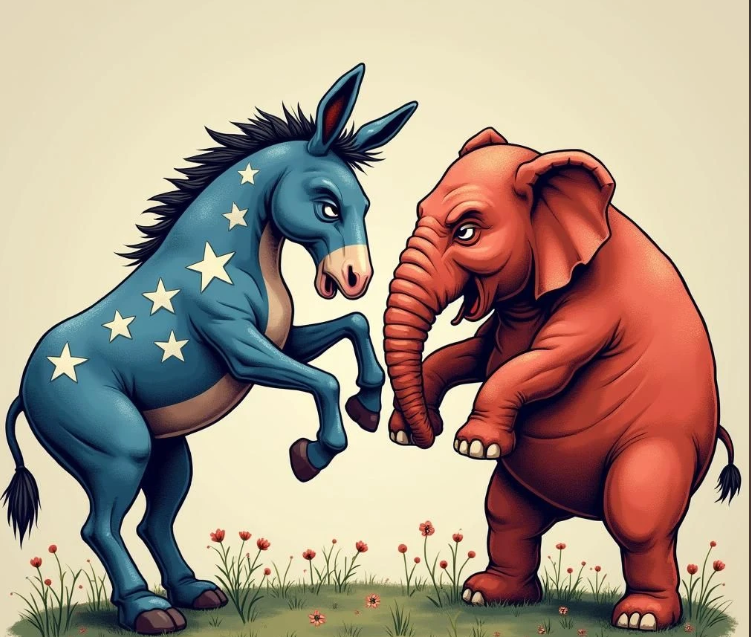With a divided electorate and dwindling faith in political leadership, new data reveals a nation on the verge of institutional disillusionment.
What to Know:
- 43% of Americans say neither party has strong leadership; only 16% say Democrats do, while 40% credit Republicans.
- Although Republicans still poll better on crime, immigration, and the economy, their lead is quickly diminishing.
- Democrats edge out Republicans on abortion, education, and climate but fail to convince voters they can deliver results.
- 44% say neither party is capable of getting anything done in Washington.
- Independents now make up 44% of the electorate and are the most disillusioned bloc of all.
A sweeping new CNN poll conducted by SSRS from May 5-26, 2025, confirms what many Americans already feel: the two-party system is failing to inspire, represent, or deliver. With a nationally representative sample of 2,539 adults, the study found an overwhelming lack of trust in both Democrats and Republicans. The defining characteristic of today's political landscape is not so much division as it is detachment.
Screenshot from the CNN-SSRS 2025 Political Benchmarking Poll methodology overview. Source: CNN Poll
A staggering 43% of Americans say that neither party has strong leadership. Just 16% credit the Democratic Party with strong leaders, while 40% assign that title to the GOP. A significant 44% of respondents believe that neither of the major political parties is capable of effectively governing. Widespread dissatisfaction exists regarding both major political parties' capacity to produce meaningful outcomes. This sentiment acts as a stark caution regarding the current state of American democracy.
Who Americans Are and How They Were Polled
To better understand the mood of the nation, CNN commissioned a nationwide survey conducted by the independent research firm SSRS from May 5 to 26, 2025. The poll used a dual methodology to ensure a broad and inclusive sample, combining address-based sampling with random digit dialing to reach adults across the country.
Most participants, totaling 2,028, were contacted through household mailings and invited to complete the survey online or by phone. An additional 511 respondents were reached by targeting prepaid cell phone users, a group often missed by traditional polling techniques.
In total, 2,539 adults took part in the survey, completing it in either English or Spanish. The political breakdown of respondents reflected a changing electorate: 27% identified as Democrats, 28% as Republicans, and 44% as independents or affiliated with other parties. With a margin of error of plus or minus 2.7 percentage points, the poll presents a reliable snapshot of national sentiment.
Source: CNN Poll
Most importantly, the findings suggest that distrust in America’s political system is not confined to one party or one group. It stretches across lines of age, race, education, and ideology, revealing a widespread and bipartisan crisis of confidence.
News Engagements Are Politically Aware, But Disillusioned
Americans are paying attention. According to the poll, nearly ⅔ of respondents, or 63%, say they follow politics closely, either by actively seeking out news or by keeping up with major developments as they unfold. This level of engagement shows that the public is not tuning out. People are involved. They are reading, watching, and listening.
Source: CNN/SSRS
81% of respondents say that Democrats and Republicans have important differences. Voters clearly recognize the divide. But that recognition does not come with enthusiasm or approval. Instead, there is a growing sense that the system is broken. People may understand where each party stands, but fewer and fewer believe either one is capable of real leadership.
A Split Nation on Government’s Role
Americans remain divided over how much responsibility the government should take in addressing national problems. According to the CNN-SSRS poll, 58% of respondents believe the federal government should do more to solve the country's challenges. Meanwhile, 41% think it is already doing too much and should step back in favor of individual and private action. The split aligns closely with ideological and demographic lines.
Source: CNN/SSRS
Democrats, younger adults, and people of color are more likely to favor increased government involvement, while Republicans, older voters, and White respondents tend to support a more limited role. This division is not new, but it remains a fundamental fault line in American politics, reflecting conflicting visions of responsibility, self-reliance, and fairness.
The American Dream Questioned
Belief in the traditional American promise—that hard work leads to success—is weakening. Only 54% of Americans say that most people who work hard can get ahead, a sharp decline from 67% in 2016. This drop signals increasing skepticism about upward mobility and the fairness of the economic system.
Source: CNN/SSRS
The divide here is also strongly partisan. Among Republicans, 76% say hard work pays off, as do 72% of conservatives. Among Democrats, only 35% share that belief, and among liberals, the number drops to 29%. The disparity suggests that confidence in the American Dream has become as ideological as it is economic.
Diversity and Culture
Most Americans still believe diversity is a strength, but that support is slipping. The poll found that 72% of respondents believe the growing racial and ethnic diversity of the population enriches American culture, down from 82% in 2019. The partisan contrast is stark. Among Democrats, 90% say diversity is enriching. Among Republicans, only 49% agree, while 48% of GOP respondents see increased diversity as a threat.
Screenshot from CNN/SSRS poll
Education and race also shape these views. 83% of college graduates and 77% of people of color view diversity positively, compared to lower levels among non-college graduates and White respondents. What once seemed like common ground has become a cultural flashpoint.
Abortion Views
Public opinion on abortion continues to shift toward broader access, though not without limits. The survey shows that 36% of Americans believe abortion should be legal in all circumstances, while another 15% support legality in most cases. On the more restrictive side, 35% say it should only be legal in a few circumstances, and 12% believe it should be illegal in all cases.
Screenshot from CNN/SSRS poll
Combined, 51% support abortion being legal in all or most situations, while 47% support significant restrictions or total bans. These figures reflect a country still divided, but one where a narrow majority now leans toward reproductive freedom, especially among younger, college-educated, and left-leaning voters.
Democracy Under Threat
Americans are alarmed about the state of their democracy. The poll found that 49% believe democracy is under attack, while another 36% say it is being tested but not in danger. Just 13% believe democracy is safe. Partisan and age divides shape this view dramatically. Among Democrats, 72% say democracy is under attack, while only 29% of Republicans agree. In contrast, nearly half of Republican respondents think the system is being tested but will endure, and 22% see no real threat at all.
Screenshot from CNN/SSRS poll
Older voters are much more likely to express concern, with 61% of those over 65 believing democracy is under attack, compared to only 44% of adults under 30. The numbers paint a picture of a nation not just politically divided but fundamentally unsure whether its system can survive.
Climate Change
Concern about climate change remains widespread, though far from universal. According to the poll, 58% of Americans are worried about the effects of climate change in their community, including 26% who are very worried and 32% who are somewhat worried. As with many issues, views diverge sharply along party lines. Among Democrats, 85% express concern, while only 28% of Republicans do.
Screenshot from CNN/SSRS poll
Demographic splits further illustrate the divide. 67% of people of color and 64% of younger Americans say they are worried, compared to 54% of White respondents and 56% of older adults. These numbers suggest that climate change is not just an environmental issue—it is a generational, racial, and ideological dividing line.
Whose Views Are Closer
When asked which political party reflects their views on key national issues, many Americans are not picking sides. Across a broad set of policy questions, a significant portion of the public consistently chose “Neither party,” highlighting just how disconnected voters feel from both major political platforms.
On crime and policing, 40% of respondents said the Republican Party’s views aligned most with their own, while 27% identified with the Democratic Party. But nearly one-third of Americans, 31%, rejected both. The same trend holds on immigration, where 39% favored the GOP, 33% leaned Democratic, and 27% said neither party represents them.
Screenshot from CNN/SSRS poll
Even on the economy, long considered the Republican Party’s stronghold, support is fractured. 38% aligned with Republican views, 31% with Democrats, and 30% said neither side speaks for them.
On abortion, the numbers shift slightly in Democrats’ favor. 39% of Americans said their views on abortion align more closely with Democrats, compared to 29% with Republicans. Still, 30% chose neither party. Education sees a similar pattern. 41% sided with the Democratic Party’s approach, 34% with Republicans, while 24% said neither. And on climate change, 39% again favored the Democratic position, but only 25% supported the GOP. A full 34% said neither party reflected their beliefs on the issue.
Screenshot from CNN/SSRS poll
These results reveal a troubling pattern. On almost every major topic, a sizable bloc of Americans—often a quarter to a third—does not feel represented by either party. In several cases, “Neither party” performs better than the runner-up. That level of detachment is not just a polling quirk. It is a signal that the two-party system is no longer capturing the political identities or policy priorities of a growing share of the electorate.
How Americans Describe the Parties
Americans are not impressed with either major party’s character or competence. When asked which party has strong leaders, only 16% pointed to Democrats and 40% to Republicans, while a larger share, 43%, said neither party shows strong leadership. The same trend holds when it comes to getting things done: 36% chose Republicans, 19% chose Democrats, and 44% again said neither. On economic representation, 34% called Democrats the party of the middle class, 32% said Republicans, and 33% rejected both.
Screenshot from CNN/SSRS poll
Even on the question of which party represents change, just 32% picked the GOP and 25% the Democrats, while 42% said neither—down from 56% who gave that label to Democrats back in 2006. The only category where "neither" doesn’t dominate is extremism, where 41% called Republicans the extreme party, 30% said Democrats, and 27% said neither. These responses paint a clear picture: voters are not just frustrated with policy. They see both parties as lacking the leadership, effectiveness, and vision to govern.
Wrap Up
With 44% of Americans identifying as independents and majorities saying neither party shows strong leadership nor can get things done, the cracks in the two-party system are no longer subtle. They are structural. This is not just about policy preferences. It is about legitimacy, relevance, and whether Americans still believe the current system serves them at all.
The public is engaged but fed up, politically informed but ideologically homeless. On nearly every major issue—from crime and immigration to climate and education—a sizable share of Americans choose “neither party” as the one that represents them. That level of detachment signals something larger than low approval ratings. It points to a democratic vacuum.
If Democrats and Republicans continue to talk past the public or cater only to their extremes, they risk becoming institutions of habit rather than vehicles of change. The question now is not who wins the next election. It is who, if anyone, still believes the system is worth participating in. Because what this poll ultimately shows is not just polarization. It shows a country drifting away from the political order it once accepted as inevitable.

-2.png)

.png)
-3.png)
